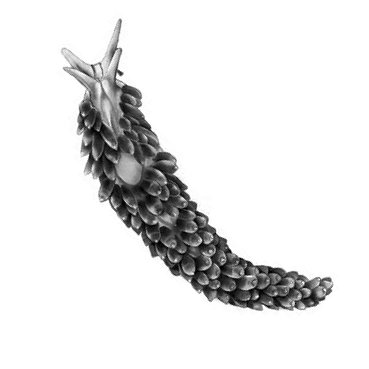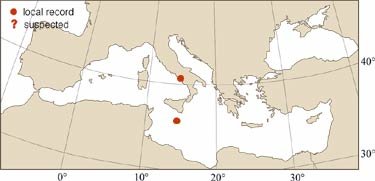
|
Relevant Synonyms
Misidentification
|
|
| drawing: Tuvia Kurz |
|
SHORT
DESCRIPTION
color :
body translucent white with more or less rhomboidal opaque white areas in the median dorsal line, outlined with orange pigment, which extends from the oral tentacles and rhinophores to the posterior end of the animal. Oral tentacles and rhinophores opaque white above, and orange below. Cerata with a subapical white band below the orange tip, each marked internally with a light brown diverticulum of the digestive gland.
common size :
it can reach up to 40 mm in length. The Mediterranean specimens measured from 3 to 14 mm. |
DISTINGUISHING CHARACTERISTICS
BIOLOGY / ECOLOGY
habitat :
in the Mediterranean, found under rocks and in rocky walls between 1 and 12 m. |
|
1st
Mediterranean record
|

|
|
DISTRIBUTION
|
ESTABLISHMENT SUCCESS
speculated reasons for success :
|
|
|
MODE OF
INTRODUCTION |
IMPORTANCE TO
HUMANS |
|
KEY
REFERENCES
|
|
|
 Aeolidiella takanosimensis Baba, 1930 [Schmekel, 1968]
Aeolidiella takanosimensis Baba, 1930 [Schmekel, 1968]